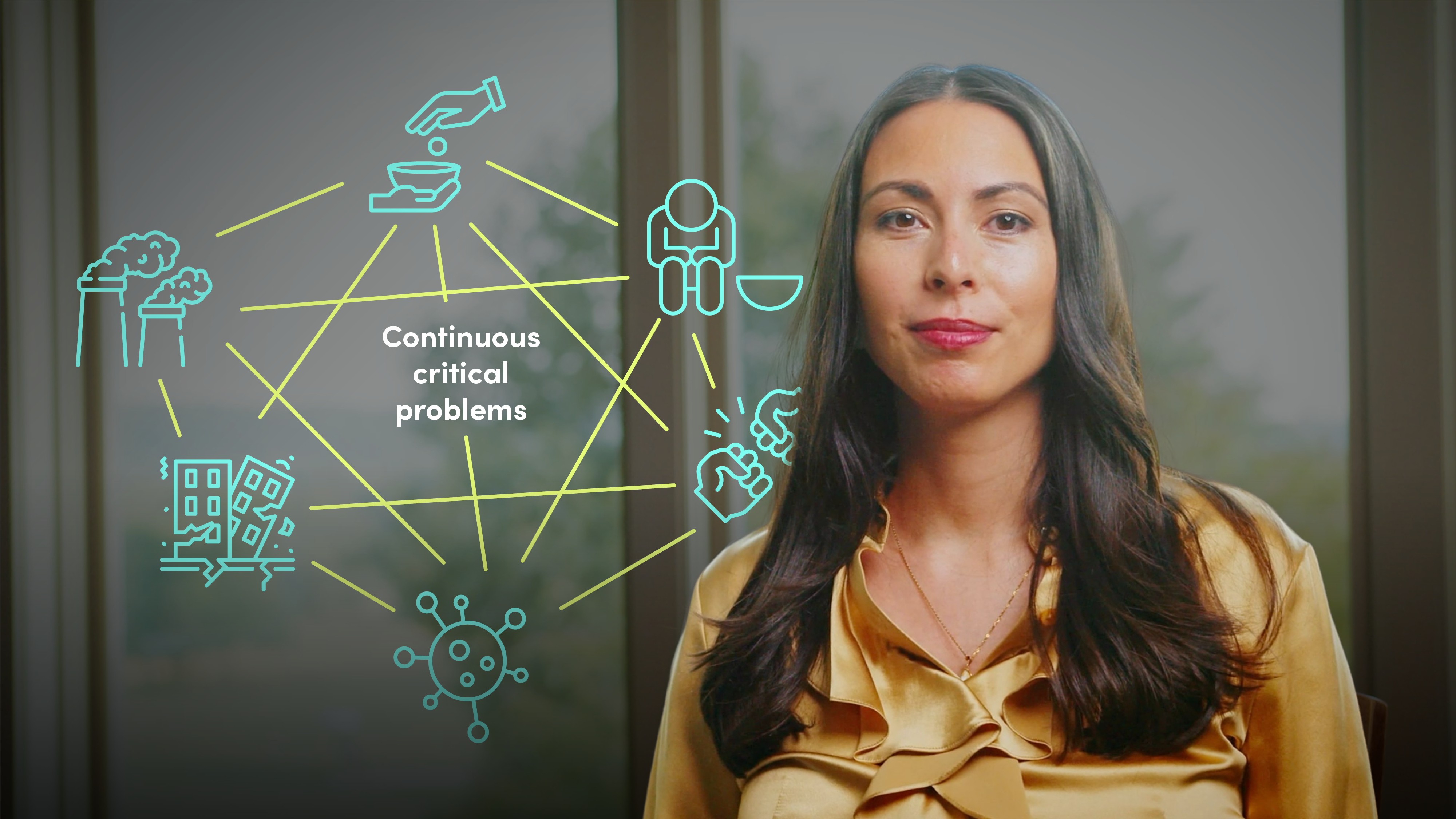
The Limits to Growth

Gaya Herrington
15 years: Sustainable Economics
In the first video of her series on the limits to growth, Gaya Herrington provides background to the history of the Club of Rome and how they analysed the “predicament of humankind”. through their system dynamics model. She also covers her research around The Limits to Growth scenarios based on the original model designed by the Club of Rome.
In the first video of her series on the limits to growth, Gaya Herrington provides background to the history of the Club of Rome and how they analysed the “predicament of humankind”. through their system dynamics model. She also covers her research around The Limits to Growth scenarios based on the original model designed by the Club of Rome.

The Limits to Growth
13 mins 22 secs
Key learning objectives:
Learn about the origins of the Club of Rome
Understand the key terminology used in the research
Understand the difference between system dynamics and mainstream models
Outline the four limits to growth scenarios
Overview:
It is well established that since the Industrial Revolution, the main focus of humanity has been around the concept of perpetual growth. Governments and businesses around the world have led us down this trajectory over the decades. This however, is not sustainable and has given rise to many of the continuous critical problems that we face today. In order to avoid global collapse, we need systemic change and ensure we put ourselves on a trajectory more aligned with a stabilised world.
Here are some reasons as to why the notion of growth has been pushed:
- Conception that as economies grow, more wealth can be distributed amongst the population
- Economic growth is seen as a necessity to facilitate job creation
- Growth is experienced as a source of hope (a better tomorrow) and thus has a spiritual dimension
- Does not mention the unintended negative consequences
- Does not align with reality with regards to higher levels of well-being
- Business as usual (BAU) - This scenario was based purely on historical averages and indicates a collapse occuring around our current time (2020s). Here the collapse is caused by resource scarcity.
- BAU 2 (Business as usual 2) - This scenario also ran on historical averages, with an assumption that we had double the amount of non-renewable resources as in BAU. Humanity can carry on business as usual for a decade or two longer than in BAU, but the collapse is also much steeper. In this scenario, the collapse is brought about by pollution from industrial output.
- Comprehensive Technology (CT) - This scenario contains the additional assumption of unprecedentedly high technological innovation rates. It is also important to note that whilst humans are smart, our capabilities are not infinite and innovation rates have never been nearly as high as projected in this scenario.
- Stabilised World (SW) - This scenario, unlike the others, deviates markedly from historical averages. It also assumes high technological innovation rates but more crucially, assumes that there are significant behavioural changes towards prioritizing human services over the pursuit of growth. It is only in this scenario that we avoid significant declines and maintain relatively high well-being levels throughout the rest of the century.

Gaya Herrington
There are no available Videos from "Gaya Herrington"





















